Hi! Today is our fourth part of the Chinese pantry, following our explorations of doubanjiang, black vinegar, and Sichuan pepper. We now arrive at the most essential Chinese pantry ingredient: soy sauce. It’s a vast topic, and even with extensive research, I might have only scratched the surface. You can watch the video version here.
It's probably fair to say that you can't cook Chinese food without soy sauce. Soy sauce (jiangyou, 酱油) is the backbone of Chinese cooking and, as Fuchsia Dunlop calls it, the archetypal Chinese seasoning. It seasons food with saltiness and umami, cuts through fat, and adds color.
China has been making a paste (jiang, 酱) from fermented soybeans and wheat since the Han Dynasty, later developing the liquid extracted from jiang. The first recorded mention of soy sauce appeared in a Song Dynasty book1 around 12th century. By the Qing Dynasty, soy sauce had become an essential part of Chinese cuisine, with many local sauce manufacturers emerging.
The traditional process begins with soaking and steaming soybeans, then mixing them with wheat flour to develop molds (qu). After that, this mixture is combined with salt and water, then sun-dried and fermented in jars for months or even years. The liquid that is pressed from the mixture is pasteurized to become soy sauce. This entire process takes place over the course of seasons and is described as "growing mold in spring, sun-drying in summer, and pressing oil in autumn."(春制曲,伏晒酱,秋出油)
Three types of Chinese soy sauce
Soy sauce later spread to Japan and Southeast Asia, with each region developing its own production techniques and flavor profiles. At an Asian grocery store, selecting a soy sauce can be overwhelming. The general rule is to choose a product from the cuisine you cook most often.
In Chinese cuisine, there are three main types of soy sauce: light, dark, and seasoned.
The terms "light" and "dark" soy sauce originated in the Cantonese region and were later adopted throughout China in the last decades. In many regions, including Sichuan, this condiment was simply called "soy sauce" without distinction. Nowadays, these terms are widely accepted and used in modern cookbooks in China.

Light and regular soy sauce
Light soy sauce (生抽, sheng chou) is a thin, pale liquid with a red-brown color. It tastes mostly salty and umami with a slight hint of sweetness. While regular Chinese soy sauce may have a darker color, it tastes essentially similar to today’s light soy sauce, so I put them in the same category ( however, the saltiness and flavors can vary between brands)
This all-purpose soy sauce is widely used to season nearly any type of dish and can also be enjoyed raw. In Chinese cooking, soy sauce doesn't entirely replace salt. As described in one book on cooking techniques2, soy sauce "helps to set the saltiness," so many recipes use both salt and soy sauce for optimal flavor.
Use light soy sauce to:
Marinate proteins before cooking or use directly as a pickle seasoning
Use raw in dipping sauces, noodles, cold dish dressings, or even on fruits.
Season stir-fries, soups, and braised dishes: for stir-fries over high heat, add the soy sauce at the end of cooking to avoid bitterness from high heat.
Difference between light and dark Soy Sauce
After fermentation, the initial batch extracted from the soy solids is known as "first press" (tou chou, 头抽). Saltwater is then added to the mash, sun-dried, and extracted again for a second press. Factories may continue extracting up to a third and fourth press. Light soy sauce is typically a blend of the first few extractions, with a higher proportion of first press indicating better flavor. Dark soy sauce is a more mature extraction, achieved by repeating the sun-drying and aging process. Industrially produced dark soy sauce often includes molasses and coloring for a deeper color and thicker texture.
Dark soy sauce
Dark soy sauce (老抽, lao chou) has a deep brown color, a thick, sticky texture, and a slightly sweeter taste. It is primarily used to add color and increase sauce thickness in braised and stir-fried dishes. If you want to make dishes like Hong Shao Rou (braised pork belly), there is no real substitute for achieving the dark brown glaze.
How to use dark soy sauce
Dark soy sauce is only used in cooking, sometimes in marinade to enhance the color, (it doesn’t taste pleasant raw). It’s used sparingly, and often alongside light soy sauce. Use it in braised dishes like tangcu pork ribs, soy-braised chicken, stir-fries like kungpao chicken, home-style tofu, and scallion oil noodles.
Seasoned and special soy sauce
Seasoned soy sauce is usually light or regular soy sauce with added ingredients like seafood, mushroom, yeast extracts, sweetener, and MSG. They are designed for specific needs and are considered optional in my pantry—often forgotten.
Umami Soy Sauce (味极鲜 or 美极鲜): Enhanced with MSG, sweetener, or flavor enhancers to increase umami taste, similar to Maggi seasoning. Perfect for quick stir-fries, blanched vegetables, or cold dishes.
Soy Sauce for Seafood (海鲜酱油, 蒸鱼豉油): Includes seafood or yeast extract to add umami, used for dipping seafood or steamed fish.
Sweet Soy Sauce (甜酱油): Added with sweetener and aromatics, used in Cantonese dim sum, clay pot rice, and Yunnan cuisine for rice noodles. Sichuan has a homemade version called fuzhi jiangyou (sweet aromatic soy sauce), used in mouth-watering chicken and sweet water noodles.
White Soy Sauce (白酱油): A special soy sauce with a light brown or transparent color, used in southern and eastern China in cold dishes to add flavor while maintaining color. Hard to find outside China.
How to pick soy sauce
The three major soy sauce production regions in China are Sichuan, Zhejiang and Jiangsu, and the Cantonese regions. Brands from the latter, such as Lee Kum Kee and Pearl River Bridge, are most accessible in Europe and the US. For light soy sauce, I recommend tasting it raw to understand its flavor profile.
A few factors to consider when picking specific products:
Fermentation Process and Age: Look for naturally brewed soy sauce made from the traditional liquid fermentation process (instead of chemical soy sauce). Even better if labeled "first press/extract." Most supermarket natural soy sauces are brewed for about 3-6 months. Soy sauce aged over a year has a deeper flavor.
Ingredient List: Fewer additives indicate flavor developed from high-quality natural ingredients. Look for "no additives" labels. Some soy sauces include mushrooms to deepen the umami taste. Compare the soy content; higher soy content means more umami.
Premium and Superior Labels: Chinese soy sauce is categorized from premium to third grade based on amino acid nitrogen content—the higher, the better, and premium grade has >0.8g per 100ml. Even the English translation can be confusing sometimes,"premium" and "superior" labels are generally good signs.
A few products I recommend:
You can find these in big Asian grocery stores or online in Europe and the US.
Haday (Haitian) Golden Superior Light Soy Sauce (or the no additives version): Subtly sweet, thick, and umami.
Pearl River Bridge Superior Light Soy Sauce: Salty, more balanced taste.
Lee Kum Kee Double Deluxe Light Soy Sauce: Aromatic, saltier with a bit of a sour aftertaste. I use the cheaper variant LKK premium, too, which has a lighter flavor.
Haday (Haitian) Mushroom Dark Soy Sauce: rich and umami flavor, half a teaspoon could yield nice coloring
Beyond supermarket brands, you can seek out regional options like Zhongba soy sauce for Sichuan cuisine, artisanal hand-crafted soy sauce, or soy sauce made from black soybeans instead of regular yellow soybeans. These usually come at a higher price point.
How to Store Soy Sauce
Unopened soy sauce lasts a long time. Once opened, store it in a dark, cool place—no need to refrigerate. I keep mine on a shelf over the stove for easy access. If you don’t use it daily, opt for small bottles so they don’t expire.
Chinese, Japanese, and other soy sauces
I use my light soy sauce in Japanese, Korean, and Thai recipes, and it works well.
Japanese soy sauce is made with roasted wheat and has a higher wheat content, while Chinese soy sauce uses wheat flour and has a higher soybean content. However, Chinese factories are also adopting soy sauce techniques from Japan. So I’d say in many cases, Chinese light soy sauce and Japanese koikuchi shoyu (the common Japanese kind) can be used interchangeably, especially if kikkoman is the soy sauce you have access too.
Although I recommend a good bottle of Chinese soy sauce, it’s not a strict rule—I’ve used Kikkoman to cook Chinese dishes too.
What’s your favourite soy sauce? let me know in the comments!
《山家清供》林洪
“在菜肴的制作, 酱油具有辅助定咸味、提鲜、增色、去腥、解腻等作用” (《川菜制作》2013)

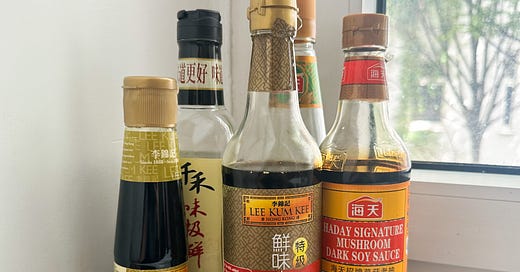


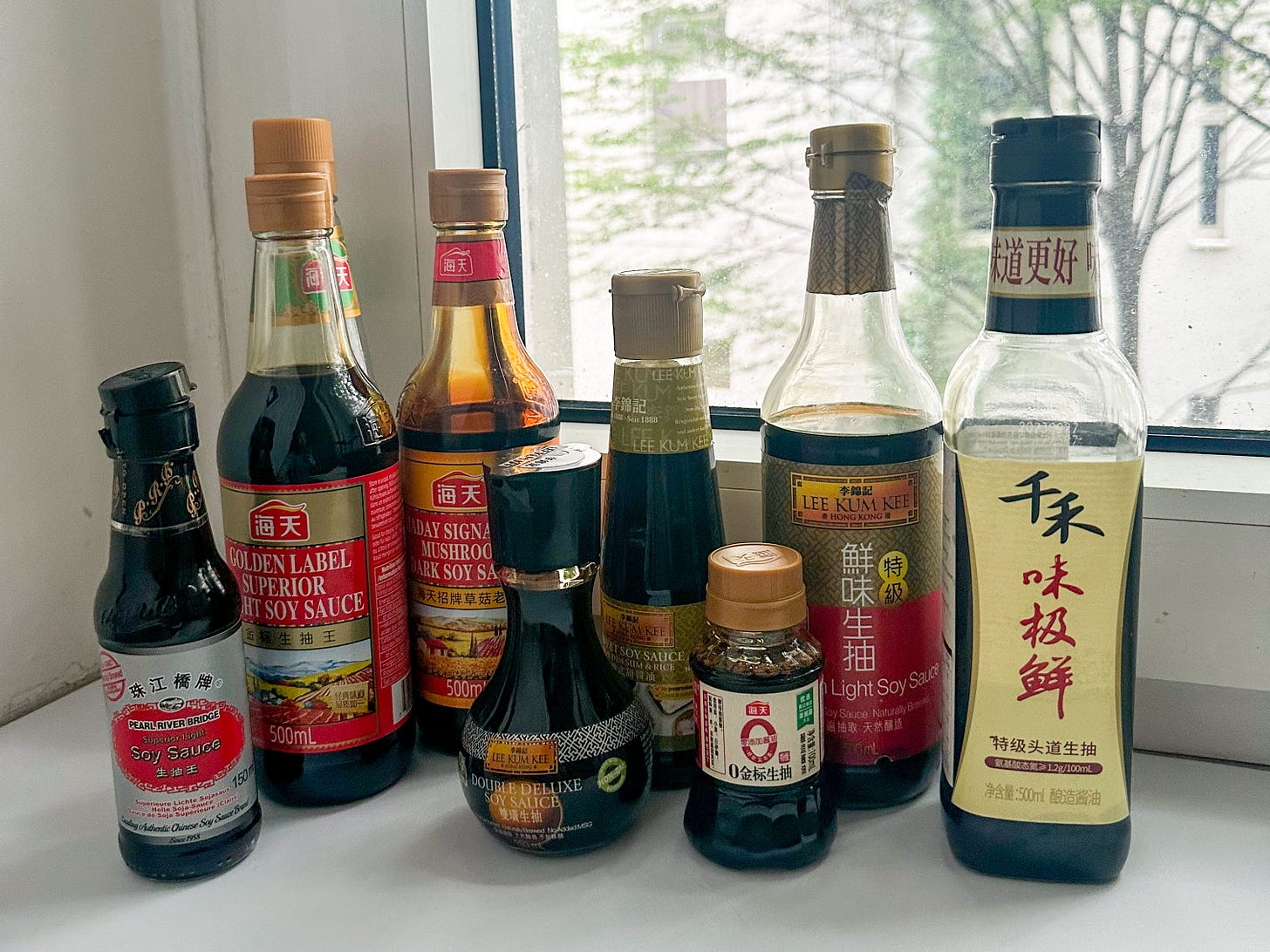
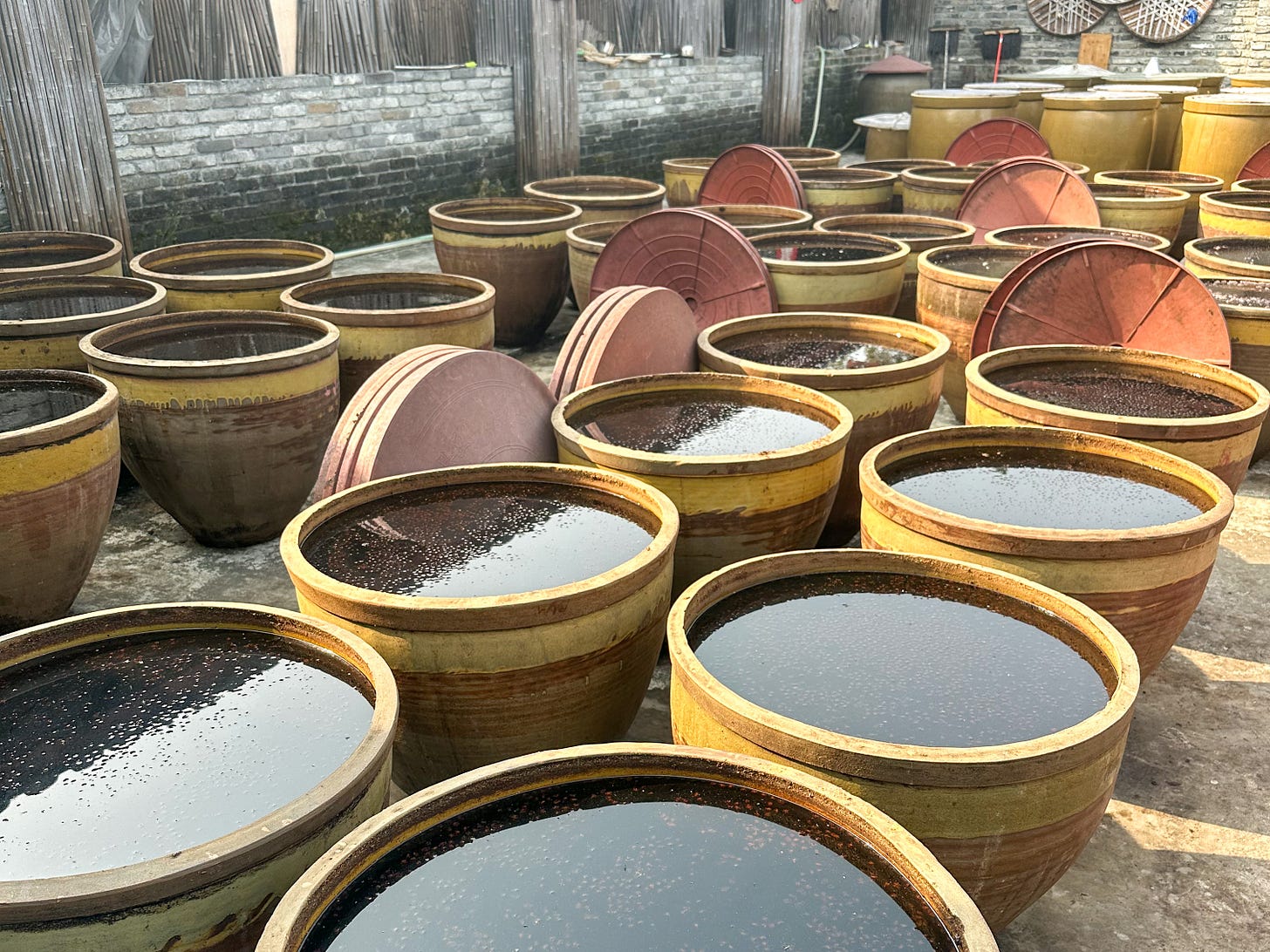
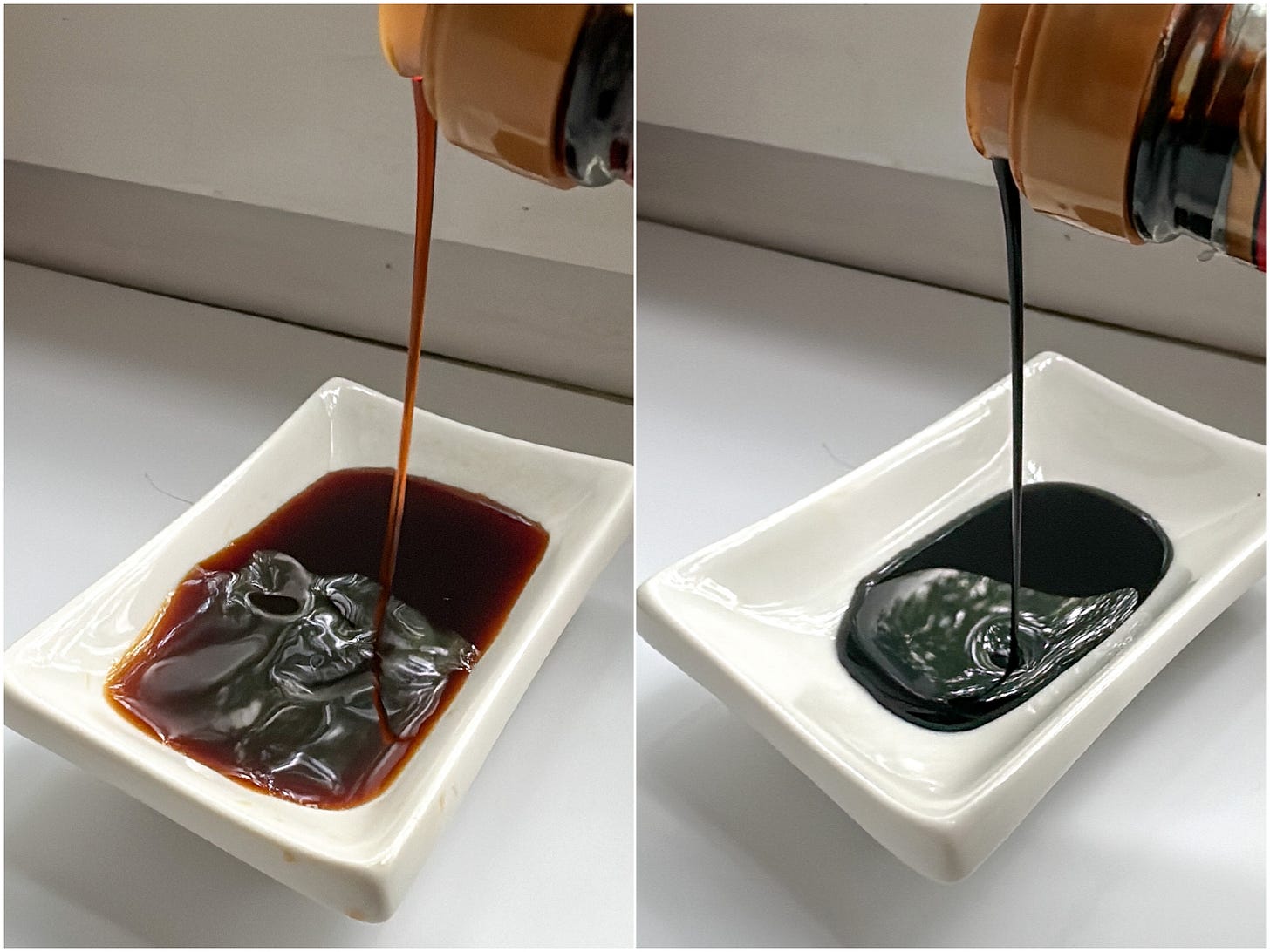
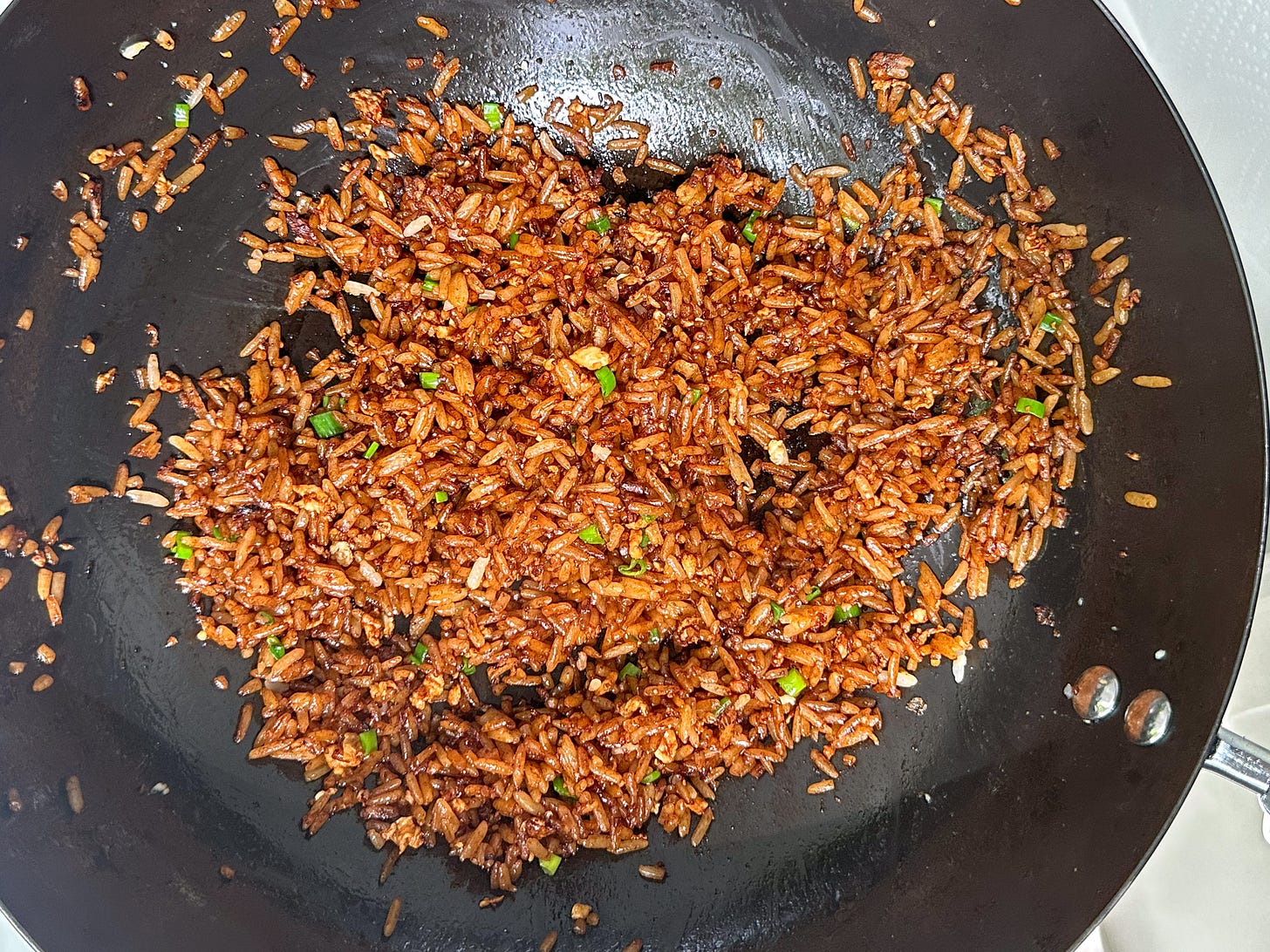
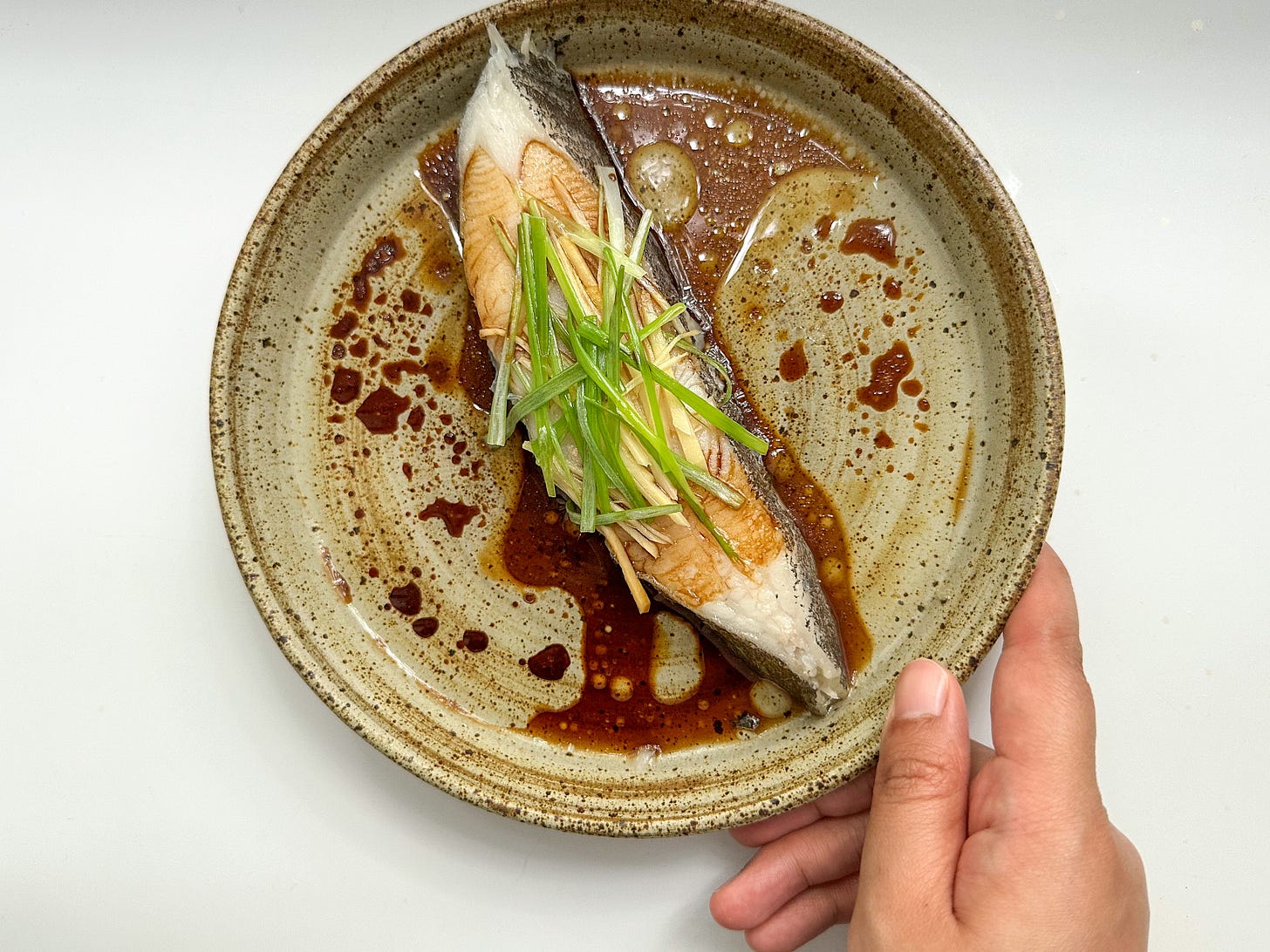
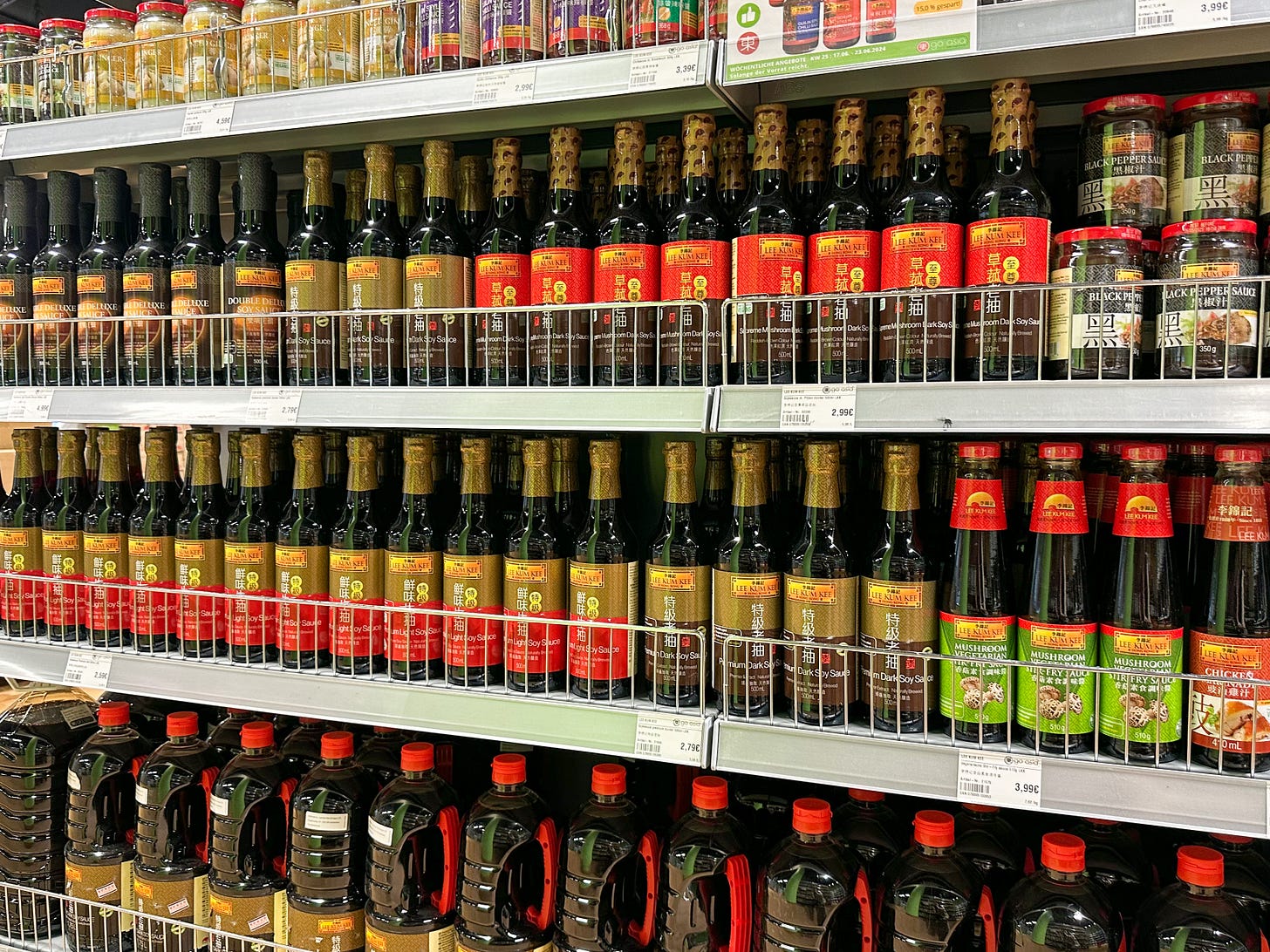
It seems the only way to decide is to taste. The labeling is not straight forward, is it?
Soy good! Off to buy a 1 yr aged soy sauce 🔥